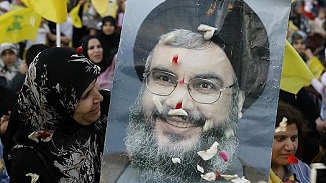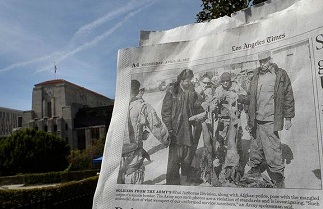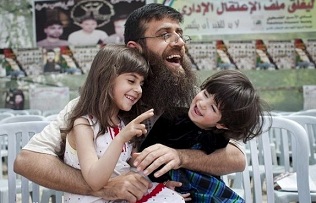The Disappearing Terrorists

A Hezbollah supporter carries a poster of Hezbollah leader
Sayyed Hassan Nasrallah during a rally marking Resistance
and Liberation Day in Beirut. (Jamal Saidi/Reuters)
Night is here but the barbarians have not come.
And now what shall become of us without any barbarians?
Those people were some kind of solution.
– Constantine Cavafy
It hardly makes sense to have a global war on terror if there are not that many terrorists threatening to blow themselves up in Peoria. Terrorism can hardly be considered a growth industry, particularly if one assesses it based on the congressionally mandated State Department annual report on the subject. According to the report, every year terrorists become fewer and less capable. And one would be hard-pressed to find too many instances in the document of terrorists killing Americans or even trying to kill Americans, which may be attributable to fewer Americans being found these days in places like Iraq. It is becoming even more difficult to find groups and individuals scattered overseas that have the resources, the motivation, and the skills necessary to travel to the heart of the Great Satan and, once here, acquire explosives, evade the police, make their way to Penn Station, and blow themselves up.
Lacking any real terrorists and recognizing that the war on terror must go on for reasons best known to bureaucrats and defense contractors, it has perhaps become an acceptable option to make some up. One of the most persistent allegations about the next-generation terrorism threat relates to Hezbollah. It is often noted among the punditry that Hezbollah has killed more Americans than any other terrorist group except al-Qaeda. Surprisingly, the bald assertion is actually true even if one might reasonably argue that Hezbollah does not really fit the definition of a terrorist group at all. Hezbollah did indeed carry out the 1983 bombing of the U.S. embassy in Beirut, killing 17 Americans and nearly wiping out the CIA station, which was meeting in a conference room. A subsequent bombing of the Marine barracks in Beirut killed 242 more Americans. Some other kidnappings and killings of Americans in Lebanon in the 1980s were also attributed to Hezbollah. The bombings, killings, and abductions occurred at a time when the U.S. was using military force to restore order in Lebanon, an intervention that was pretty much directed against Hezbollah with the intention of dismantling the group as a political entity.
Hezbollah has not killed any Americans since those acts of what some might consider self-defense, and there is no evidence whatsoever that the group has any interest in targeting the U.S. It is very much focused on furthering its own interests in Lebanon, where it is now a party of government, and in opposing Israeli military actions and U.S. covert operations designed to destroy it.


























